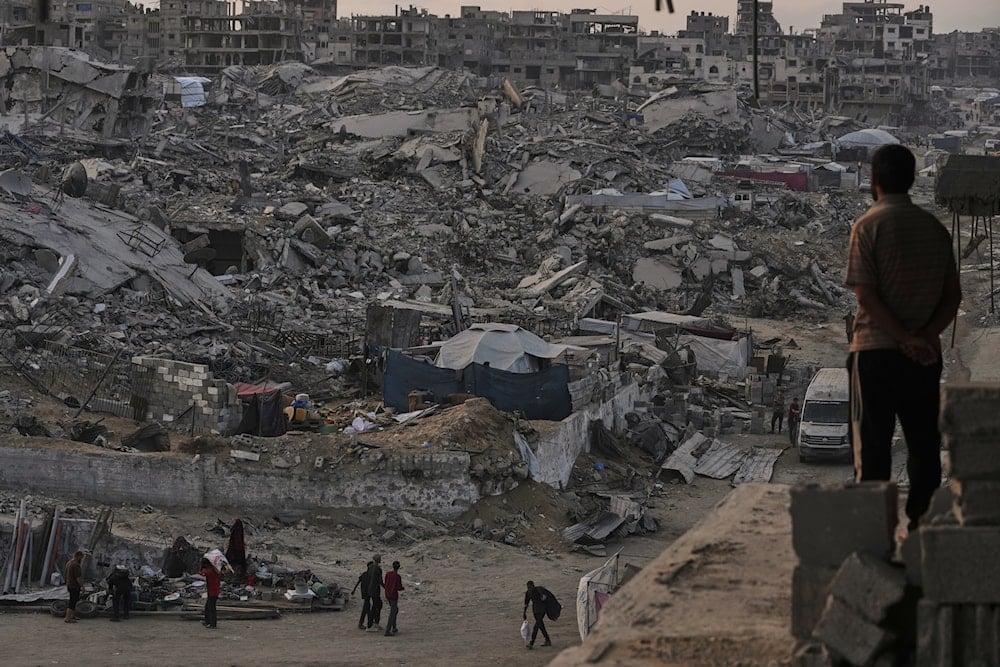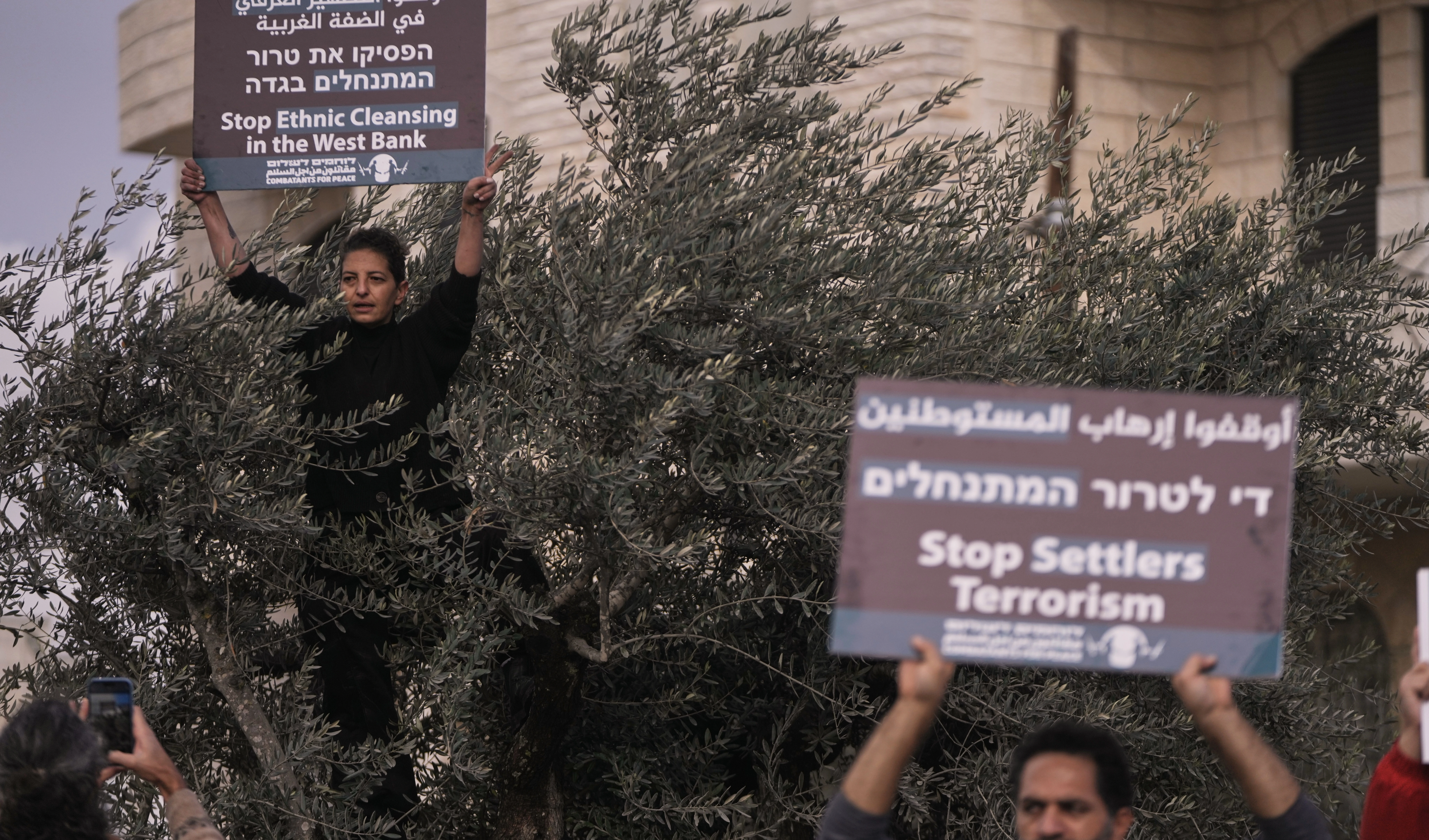7,000+ tons of unexploded ordnance endanger Gaza civilian lives
Gaza faces a lasting crisis as thousands of unexploded bombs left by "Israel" threaten lives, hinder recovery, and block vital humanitarian efforts.
-

Palestinians walk through the destruction caused by the Israeli air and ground offensive in the Sheikh Radwan neighborhood in Gaza City, Tuesday, Nov. 11, 2025 (AP)
Gaza may now host the world’s densest concentration of unexploded ordnance, presenting a persistent and severe threat to civilians long after "Israel’s" recent bombardment of the besieged coastal territory has ended.
According to The Economist, much of the danger lies hidden beneath the rubble, where Israeli forces deployed numerous bombs with delayed-action fuses. These devices can detonate unpredictably days, weeks, or even months later, complicating clearance operations and putting returning families at risk.
UN data cited in the report indicates that at least 53 people have been killed and hundreds more have been injured by unexploded bombs, though humanitarian groups warn that the true toll is likely far higher.
Among the most tragic cases were six-year-old twins Yahya and Nabila al-Sharbasi, who were severely injured after mistaking an abandoned bomb in their neighborhood rubble for a toy.
Children especially vulnerable
Children in Gaza’s densely populated areas remain especially vulnerable, aid organizations say, and UN estimates suggest that more than 7,000 tons of unexploded ordnance are scattered across roughly 40 percent of Gaza’s neighborhoods, with Beit Hanoun, Beit Lahia, and Jabalia among the hardest hit.
Humanity & Inclusion, a leading relief group, warns that the complete removal of these explosives could take up to 20 to 30 years, or longer, without substantial international engineering support. “Complete debris removal will never happen,” said Nick Orr, the organization’s explosive-removal expert. “Much of it is buried deep. We will be finding these for generations.”
Gaza's case worse than ISIS-hit Mosul
The report also draws parallels with Mosul, where UN mine-clearance teams continue to face hazards years after the defeat of the Takfiri ISIS terrorist group; however, it notes that Gaza’s far more intense bombardment makes clearance operations there even more complex and dangerous.
Efforts to safely neutralize unexploded ordnance in Gaza are severely hindered by Israeli restrictions, which limit the import of specialized equipment and the deployment of expert teams and obstruct the professional training of Palestinian personnel needed for such operations.
Many essential tools are classified by "Israel" as dual-use items, preventing their entry into the territory. As a result, bomb-clearance teams have been forced to improvise, using methods such as filling old food bags with sand to create temporary blast barriers.

 3 Min Read
3 Min Read









